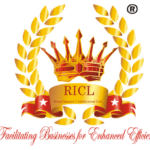
RoHS & REACH Testing
RoHS (Restriction of Hazardous Substances) and REACH (Registration, Evaluation, Authorization, and Restriction of Chemicals) are two important regulatory frameworks governing the use of hazardous substances in products and chemicals in the European Union (EU). Let’s delve into each of these regulations and their respective testing requirements:
RoHS (Restriction of Hazardous Substances) and REACH (Registration, Evaluation, Authorization, and Restriction of Chemicals) are two important regulatory frameworks governing the use of hazardous substances in products and chemicals in the European Union (EU). Let’s delve into each of these regulations and their respective testing requirements:
RoHS Testing (Restriction of Hazardous Substances): RoHS aims to restrict the use of specific hazardous substances in electrical and electronic equipment (EEE) to protect human health and the environment. The substances restricted under RoHS include lead (Pb), mercury (Hg), cadmium (Cd), hexavalent chromium (Cr6+), polybrominated biphenyls (PBBs), and polybrominated diphenyl ethers (PBDEs).
RoHS Testing Requirements:
X-ray fluorescence (XRF) spectrometry: Used for non-destructive analysis of materials to detect restricted substances like lead, mercury, cadmium, and chromium.
Fourier-transform infrared spectroscopy (FTIR): Identifies brominated flame retardants like PBBs and PBDEs in plastics and polymers.
Inductively coupled plasma mass spectrometry (ICP-MS): Provides highly sensitive detection of heavy metals like lead and cadmium in electronic components.
REACH Testing (Registration, Evaluation, Authorization, and Restriction of Chemicals): REACH is a comprehensive regulation that addresses the safe use of chemicals in various industries, including manufacturing, import, and use of substances in products. It aims to ensure the protection of human health and the environment while promoting the competitiveness of the EU chemicals industry.
REACH Testing Requirements:
Chemical Substance Identification: Identifying and registering chemical substances used in products or processes with the European Chemicals Agency (ECHA).
Substance Evaluation: Assessing the properties and potential risks of chemicals through testing and evaluation.
Authorization and Restriction: Authorizing the use of certain substances based on safety assessments and restricting hazardous substances where necessary.
Types of REACH Testing:
Ecotoxicity Testing: Evaluates the potential environmental impact of chemicals on aquatic and terrestrial ecosystems.
Toxicology Testing: Assesses the toxicity and health effects of substances on humans and animals through various tests, including acute toxicity, mutagenicity, and carcinogenicity testing.
Persistence, Bioaccumulation, and Toxicity (PBT) Testing: Determines the persistence, bioaccumulation, and toxicity characteristics of substances in the environment.
Both RoHS and REACH testing play vital roles in ensuring product safety, environmental protection, and regulatory compliance within the EU market.
[sp_easyaccordion id=”10811″]
[formsapp id=”662f63f6c4dd546c9916c3db”]
